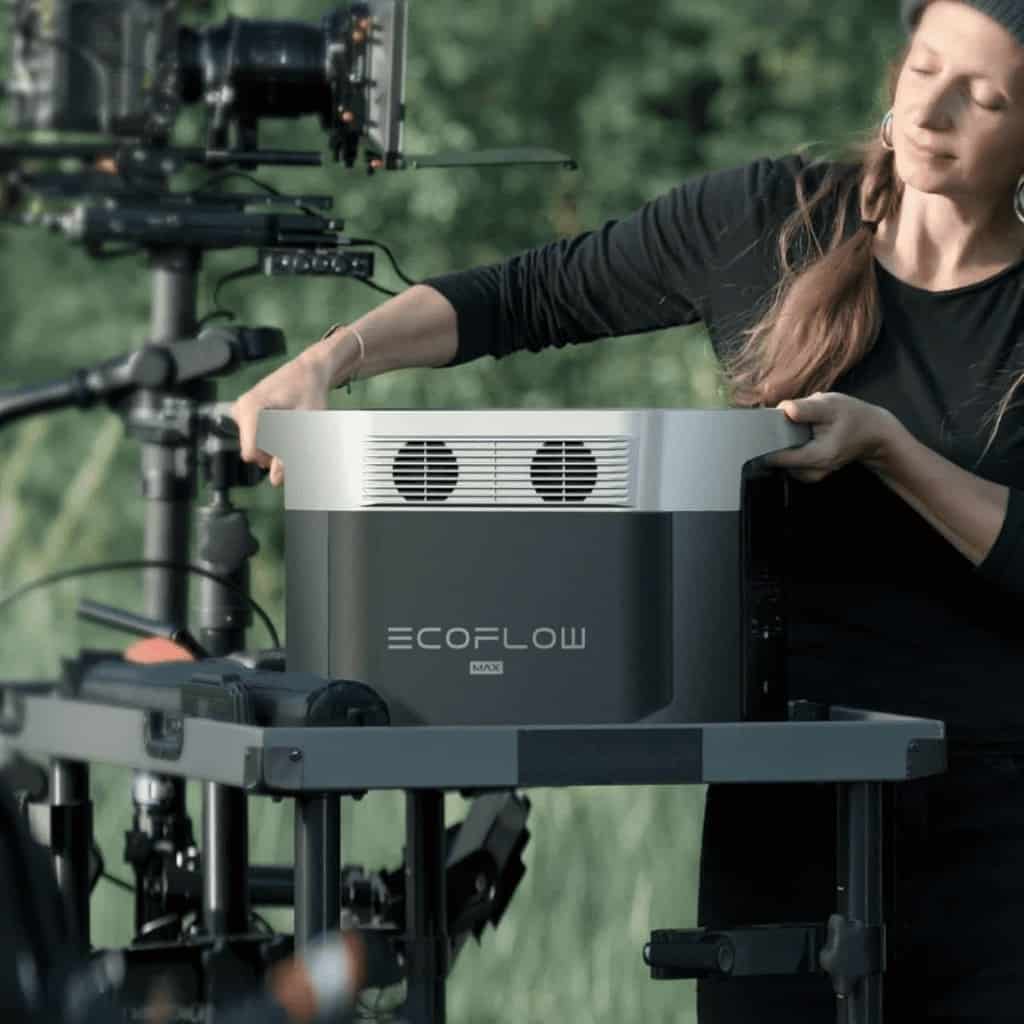If you’re new to the world of portable power stations, solar panels, and portable generators, there are probably a few questions lingering at the back of your mind. These are, after all, relatively cutting-edge pieces of technology, and it’s only natural that it takes some time to fully understand the ins, the outs, and in-betweens.
Portable generators and portable power stations are similar in many ways but shouldn’t be confused. Each has unique traits that might influence which one you choose to purchase.
What Is a Portable Generator?
A portable generator can generate electricity using an energy source such as fossil fuels or solar panels.
Despite being portable, don’t let their size fool you — some high-capacity portable generators can supply enough wattage to power an entire home.
DELTA Pro Portable Solar Generator
The EcoFlow DELTA Pro, with a 400-watt solar panel, comes with a 6kWh capacity that you can extend up to 25kWh — more than enough to power almost any household appliance.
The solar panel, weighing just 27lbs (12.5 kg), is one of the lightest and most powerful models on the market. It’s foldable and flexible, making transportation and storage much more convenient than other fixed frame designs.
Pros
Versatility
Portable generators allow you to be energy independent, especially when paired with solar panels to free you from grid dependency. Considering the rising energy prices, it’s worth considering alternatives.
You can also charge them via a household wall outlet or car adaptor to transform the battery into a hefty power storage unit to take electricity with you wherever you need it.
Clean Energy
Solar panels are essentially what differentiates the portable power station and the portable generator. Without them, portable power stations cannot generate their energy — only store it. But with them? There’s no need to worry about how much power you’re consuming on that camping trip or during an outage, as long as you have sufficient solar energy to recharge.
Simply unfold your solar panels, and there you have it — clean energy that isn’t about to run out anytime soon.
Cons
Reduced Portability
How much of a con this is depends on you. Compared with a portable power station, the portable generator isn’t quite as mobile, mainly due to the solar panel(s). Depending on the brand, a solar panel is quite sizeable. It’s a factor to consider if space is at a premium.
That said, some options, like the EcoFlow solar panels, have a foldable design. The 400w solar panel comes in at 41.7 x 24.4 x 0.98 in (105.8 x 62.0 x 2.5 cm). It’s about the size of a 40” flat screen TV.
Higher Costs
There’s no getting around it. Solar generators are more expensive than power stations because of the solar panels.
The gap between the two isn’t as much as you might think. Thanks to the rapid evolution of solar technology, the cost of solar panels has dropped dramatically over the past decade. They are no longer the extravagant futuristic components they once were.
Still, if you want to be able to generate your own solar energy and are looking to power numerous appliances, you’re probably going to need either a 220-watt or 400-watt solar panel. A panel of this capacity will add between $500 and $1000 in price.
What Is a Portable Power Station?
A portable power station (PPS) is almost the same as a portable generator, with the main exception being it cannot generate energy on its own.
PPS units are ideal as backup power sources in the event of a blackout or camping trips when you only need a limited power supply to recharge your personal electronic devices.

River 2 Pro Portable Power Station
The River 2 Pro PPS has a capacity of 768 Wh that you can expand to 1600Wh in X-Boost mode. It can power several devices simultaneously. The River 2 Pro can charge from zero to 100% in just 70 minutes, making it one of the fastest charging options worldwide.
Pros
Excellent Energy Storage
EcoFlow PPS models have an impressive storage capacity that you can bulk up in various ways. The DELTA Max, for example, comes with a 2016Wh capacity but can be expanded to 4032Wh with one extra battery and a massive 6048Wh with two additional batteries.

Portability
One of the best things about PPS units is their fantastic portability. Yes, they might not be able to produce their own energy, but when you need to throw something in the car and go, there’s nothing better.
A River 2 Portable Power Station is just 7.7 lbs (3.5kg) and measures only 9.6 x 8.5 x 5.7 in (245 x 214 x 142 mm), small enough to fit in the back of your car along with your camping gear.
Solar Option
While the portable power stations don’t come with solar panels as standard, they can be added separately, effectively turning your power station into a power generator.
Cons
No Standalone Energy Creation
The major drawback of the portable power station is that it cannot generate energy on its own. Unlike the portable solar generator, which comes with solar panels as standard, you must charge the power station at home or in the car.
As mentioned above, they typically come with a hefty storage capacity that you can triple using external batteries. But once you’ve expended that, you’ll need to find an energy source to recharge.
Reliance on Fossil Fuels
While we might think we are living in a new, bolder, greener age, the fact is that fossil fuel use around the world is still accelerating. These numbers can be particularly sobering when we consider the ongoing climate catastrophe.
Portable power stations that require charging through on-grid electricity still rely on fossil fuels. However, adding solar panels can transform those on-grid-reliant power stations into clean energy solar generators without fuss.
What Are the Main Differences Between Portable Generators and Portable Power Stations?
Energy Generation
The most significant difference between portable generators and portable power stations is the former can create and harness solar energy, and the latter can’t. Power stations are essentially giant portable batteries, while generators can convert the sun’s rays into energy to store.
Cost
The only other difference is the price. Considering the generator can technically do more while saving you money on your electricity bill, it’s not surprising that they’re more expensive.
But as we mentioned earlier, thanks to the dropping cost of solar panels in recent years, the two prices are not as far apart as you might imagine.
Conclusion
If you’re looking for a good all-rounder that can do absolutely anything, then a portable power generator is your best bet. It allows you to have the best of both worlds. However, if you’re simply looking for something to charge a couple of phones, power a laptop, and play music on camping trips, a portable power station might be sufficient for your needs.
Remember, you can always purchase a solar panel separately to use with your power station, so it’s not a case of needing to make a final decision right now. For an even more comprehensive breakdown of these options, plus a host of other available products, head to EcoFlow and find out what the future is all about.


